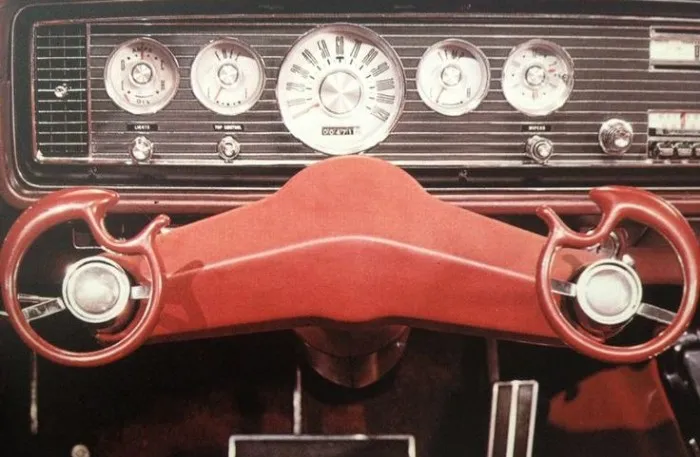Chrysler Highway Hi-Fi - 1956
- COCKPIT

- May 31, 2025
- 2 min read
Highway Hi-Fi was developed by CBS Laboratories chief Peter Goldmark, the inventor of the 33 1/3 rpm album format. (According to legend, Goldmark despised the rock 'n' roll that subsequently took over the airwaves and decided to offer civilized motorists an alternative.) After experimenting with various mediums, including magnetic tape, he devised a special hybrid recording format: a seven-inch vinyl record like the RCA 45 rpm single, but playing at the 16 2/3 rpm used in Talking Book records. Dynamic range was limited to 3,000 Hz, but on the plus side, the new format offered 45 minutes of programming per side. A five-pin harness fed the player's output into the car stereo's audio section, while a carefully designed tone arm with high tracking force kept skipping and slippage to a minimum.

Goldmark demonstrated his record player to several Chrysler engineers, and later to executive Lynn Townsend, who would later become company president. Chrysler liked the setup and agreed to buy 20,000 units from the CBS manufacturing division, though the order was later reduced to 18,000. The automaker created the brand name "Highway Hi-Fi" and made the player optional on Plymouth, Dodge, DeSoto, Chrysler, and Imperial models, all sharing the same under-dash unit pictured above. The CBS Columbia division manufactured the records—a mix of light classics, musical theater, and easy listening favorites—which were distributed through Chrysler's dealer network and by mail. Dodge spokesman Lawrence Welk joined the marketing effort.

Unfortunately, we know how that goes. Although the player was offered on all Chrysler model lines from 1956 to 1959, it never caught on, primarily due to poor reliability, high warranty costs, and the limited variety and distribution of the Highway Hi-Fi record catalog. The record player was never more than a novelty, although a good number of units are still around in the Chrysler collector car community.
Despite the initial misfire, Chrysler revisited the automotive record player concept again in 1960-1961 with a completely different unit produced by RCA and known as the AP-1 (below). Offered by Chrysler and RCA Victor dealerships, it was also marketed by Sears under the Allstate brand. This player took popular RCA-style 45 RPM singles (including rock 'n' roll, Hooray) and played them backward, much like many jukeboxes of the era. When each record in the changer ended, it fell into the unit's floor. While the RCA player was also far from ideal, it spawned a host of copies and competitors from Philips and others, and undoubtedly inspired new and improved music formats in the car, including four- and eight-track tape cartridges.




Comments